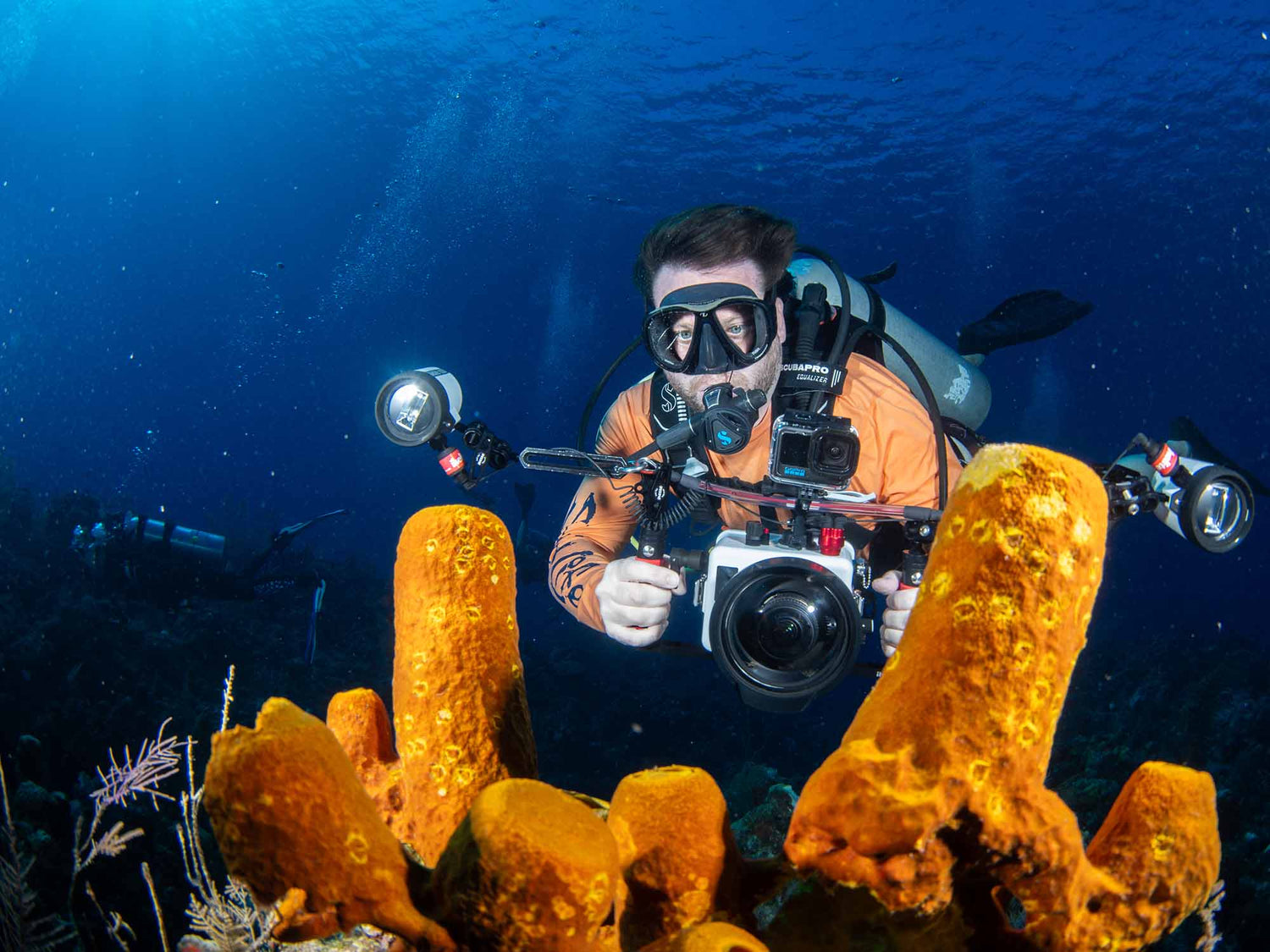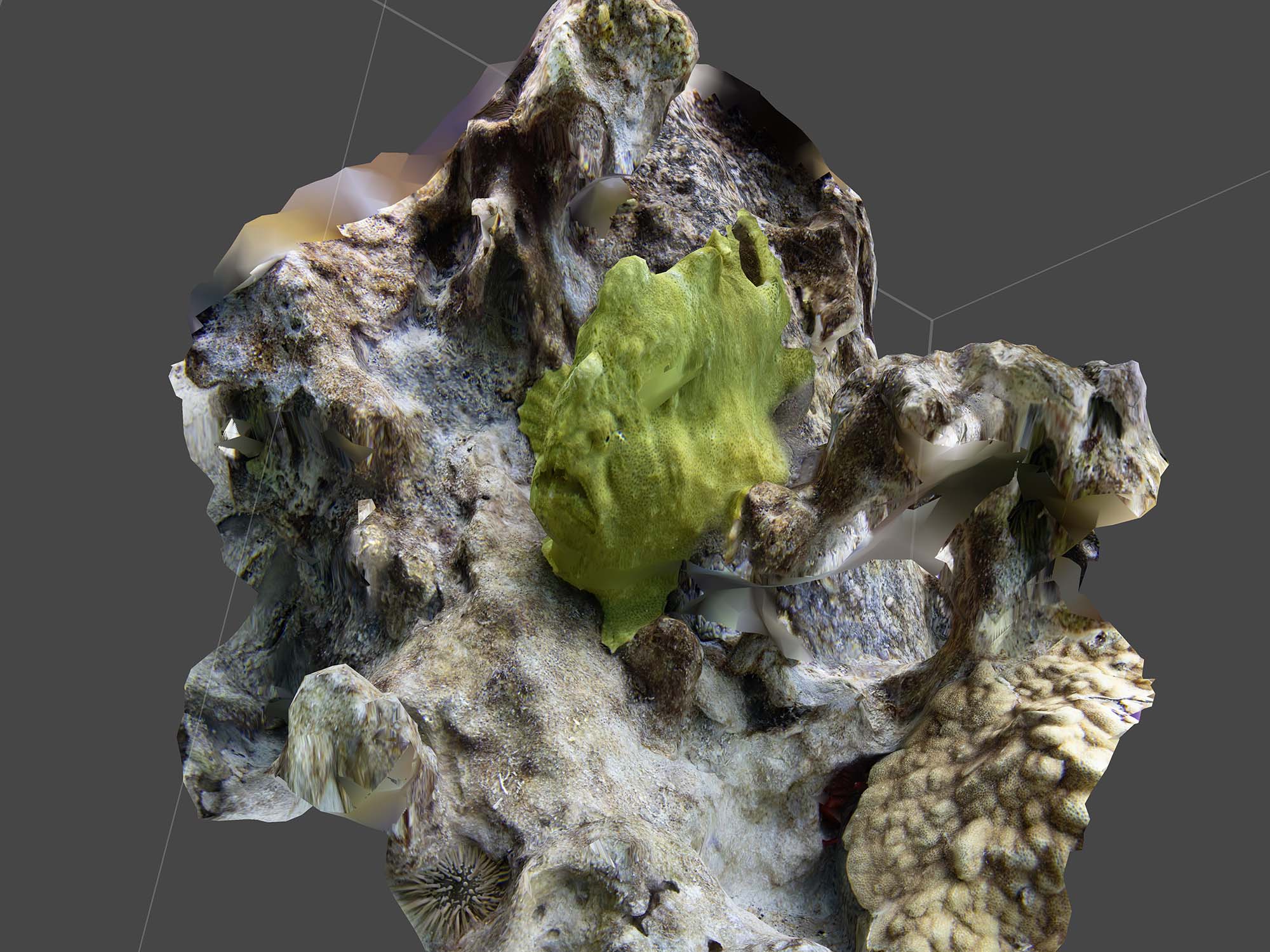By Steve Miller
Imagine the perfect dive with your camera… amazing subjects fly by as you fill your card with colorful captures.
When you wake up you will realize this isn’t how most strong images happen. Mostly they are planned, and then created. But envisioning your frame beforehand assumes that you know what to expect to see on your dive and this is not always the case.

Many reefs are teeming with common but fast moving and notoriously difficult-to-photograph fish life. These are becoming possible subjects due to major advances in AI-trained subject tracking autofocus. Photo © Jean Rydberg
Trust the Experts
Your focal length (macro vs wide angle) will probably determine how much ground you cover on your dive. With a macro lens we are seeking a very small scene, possibly tiny. This can mean you have plenty of subjects right under the boat or close to shore.

Always keep your eyes peeled, every once in a while a good shot swims right up to you. Photo on right © John Brigham.
Bucket List Shots

Bucket list shots require planning and often dedicating a whole trip to your target subject. Be prepared to accept whatever comes along because no operation can guarantee you’ll come back with THE SHOT! Photo © Steve Miller
Tips for Finding Something to Shoot
• Follow your dive guide, and their advice. Often the guides are diving the same sites on a weekly basis and communicating with other guides in the area about what they find. They want customers to come back feeling like they saw something special. As such, they frequently keep a memory bank of where the most impressive animal life and photo ops are on each site.

Scorpionfish are great subjects because they’re exquisitely detailed and largely stationary. Subjects this heavily camouflaged can be difficult to find on your own. Ask your dive guide to point out the good stuff. Photo © Jean Rydberg
• Stay shallow if you have a choice. Frequently more ocean life lives in the shallows. You’ll also have more light to shoot (better color) and more bottom time.
• If you’re boat diving, look for scenes or subjects near the mooring line or right under the boat. There is a reason this is a “Dive Site” versus the open expanse 100 yards away.

The most action is often right around the dive site mooring. Shallow waters have the benefit of good light and abundant life. Photo © Jean Rydberg
• Review your work. If you shoot 100 frames of 100 different subjects on a dive, you’d better be very good- or have more interest in documenting what you see than capturing something exceptional. If you find “Gold” then stick with it and take 5-10 shots. Then consider swimming away to review what you just shot. Approach the scene again considering the position of the sun, your background, and your light and shadow manipulation.

Sometimes you take what you can get as a subject because of its positioning and your ability to get a good position shooting up towards the subject.
Best Practices
Additional Reading
Up Close and Personal: A Guide to Underwater Animal Portraits
The Right Lens for Every Situation Underwater
5 Situations Where You Need a Strobe Underwater [VIDEO]
What's in My Gear Bag // Steve Miller 2023 [VIDEO]
What I Wish I Knew When I Started in Underwater Photography [VIDEO]
 Ambassador Steve Miller has been a passionate teacher of underwater photography since 1980. In addition to creating aspirational photos as an ambassador, he leads the Ikelite Photo School, conducts equipment testing, contributes content and photography, represents us at dive shows and events, provides one-on-one photo advice to customers, and participates in product research and development. Steve also works as a Guest Experience Manager for the Wakatobi Dive Resort in Indonesia. In his "free" time he busies himself tweaking his very own Backyard Underwater Photo Studio which he's built for testing equipment and techniques. Read more...
Ambassador Steve Miller has been a passionate teacher of underwater photography since 1980. In addition to creating aspirational photos as an ambassador, he leads the Ikelite Photo School, conducts equipment testing, contributes content and photography, represents us at dive shows and events, provides one-on-one photo advice to customers, and participates in product research and development. Steve also works as a Guest Experience Manager for the Wakatobi Dive Resort in Indonesia. In his "free" time he busies himself tweaking his very own Backyard Underwater Photo Studio which he's built for testing equipment and techniques. Read more...












![Secrets to Photographing Mako Sharks Underwater with Josh Blank [VIDEO]](http://www.ikelite.com/cdn/shop/articles/Mako_Sharks_Josh_Blank_Cover.jpg?v=1721762468&width=2000)
